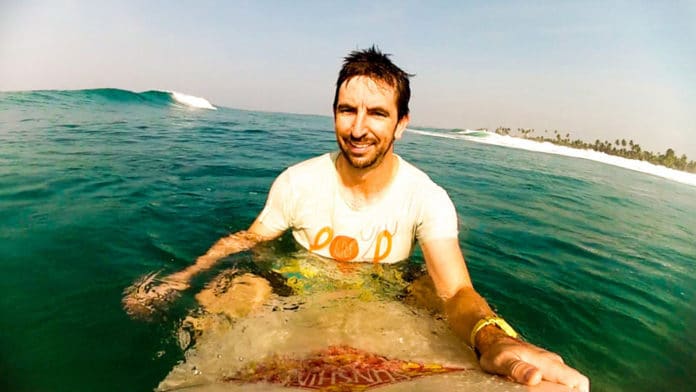A new study by scientists from the Australian National University (ANU) suggests a new life-saving technique for shark-attack victims. The technique requires a bystander to use own body weight via a fist to the midpoint between the hips and the genitals, the mid-inguinal point. Doing so stops blood flow to the lower limb by compressing the femoral artery.
In other words, the bystander needs to use their weight to make a fist and push hard between the hips and the bits.
Lead author, surfer, an emergency physician, and Associate Dean of the ANU Medical School, Dr. Nicholas Taylor, said, “The method reliably stops or reduces blood loss by using immediately available resources to treat lower limb hemorrhage.”
“In shark attacks, most people don’t get bitten twice, and they can make it back to the shore.”
“I thought if you make it to the beach with a friend and they’re bleeding from the leg, what would be the best thing you could do?”
“I knew from my background in emergency medicine if people have massive bleeding from their leg, you can push very hard on the femoral artery, and you can pretty much cut the entire blood flow of the leg that way.”
“If someone has been bitten on their leg, you only need to find the middle point between the hip and the genitals, make a fist, and push as hard as you can.”
“We found people can do this for a long period, and making a fist covers the area you need. It’s not hard to find. It could even be marked with an X on a wetsuit.”
The study compared the artery blood flow of 34 healthy people when the midpoint was pushed by bodyweight compared to an improvised tourniquet made with a surfboard leg rope.
Scientists found that this first-aid technique topped 100 percent of blood flow in 75 percent of participants. Blood flow was stopped on average by 89.7 percent by making a fist and pushing hard on the midpoint, compared to using a leg rope tourniquet, which only reduced blood flow by 43.8 percent.
Dr. Taylor said, “Most people could completely stop all blood flow. This new method saves time and works better than using a leg rope or looking for something else to use as a tourniquet.”
Dr. Taylor hopes his new method can now be used at beaches not only across Australia but around the world.
“It is easy to do and easy to remember – push hard between the hip and the bits, and you could save a life.”
Journal Reference:
- Nicholas B Taylor, David W. Lamond. Stopping Haemorrhage by Application of Rope tourniquet or inguinal Compression (SHARC study). DOI: 10.1111/1742-6723.13736
